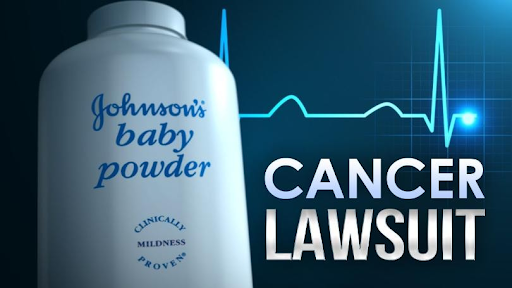Health Risks: The Saga of Talcum Powder Cancer Lawsuits

The use of talcum powder has been a longstanding practice for personal hygiene and skincare. However, a wave of concern has swept through the public consciousness due to the alleged connection between talcum powder and an increased risk of cancer. Discover the story behind talcum powder cancer lawsuits. We’ll break down the science, legal fights, and how it’s affecting people. Join us in unraveling this important tale.
Understanding Talcum Powder Composition
Mined from the earth, talcum powder, a hydrated magnesium silicate, has traditionally served various personal care purposes due to its finely ground talc content.
1. Origins of Talc:
- Geological Formation: Talc is a naturally occurring mineral mined from the earth and is a common ingredient in various personal care products.
- Hydrated Magnesium Silicate: Talcum powder is composed of finely ground talc, a hydrated magnesium silicate.
2. Historical Use:
- Traditional Applications: Talcum powder has historically been used for absorbing moisture, preventing chafing, and providing a smooth texture in various products like cosmetics and baby powders.
The Legal Landscape
Marked by landmark cases against industry giants like Johnson & Johnson, talcum powder lawsuits navigate complex causation debates, multimillion-dollar settlements, and evolving legal challenges, setting significant precedents in the pursuit of justice for those claiming health issues related to talc use. The legal arena remains a crucial battleground where the alleged connection between talcum powder and cancer unfolds with profound consequences.
1. Landmark Cases:
- Johnson & Johnson Lawsuits: Notable lawsuits against Johnson & Johnson claim that their talcum powder products contributed to cancer development.
- Multimillion-Dollar Settlements: Instances where substantial settlements were reached, reflecting the seriousness of the allegations.
2. Legal Challenges and Precedents:
- Causation Debate: Legal battles often center on proving a direct link between talcum powder use and cancer, leading to complex causation debates.
- Precedents and Verdicts: Examination of significant legal outcomes that have set precedents in talcum powder cancer lawsuits.
Link Between Talcum Powder and Cancer
Controversial studies have suggested a potential association, particularly in ovarian cancer for women using talcum powder in the genital area, while ongoing regulatory scrutiny and discussions within the cosmetic industry contribute to the ongoing debate about its safety. This complex landscape underscores the need for a nuanced exploration of the alleged risks and their implications.
1. Controversial Studies:
- Ovarian Cancer: Some studies have suggested a potential link between talcum powder use in the genital area and an increased risk of ovarian cancer in women.
- Respiratory Risks: Inhalation of talc particles has also been associated with respiratory issues and potential lung cancer risks.
2. Regulatory Actions:
- FDA Scrutiny: The U.S. Food and Drug Administration (FDA) has intermittently evaluated the safety of talcum powder, although it is not currently classified as a carcinogen.
- Cosmetic Industry Oversight: Ongoing discussions within the cosmetic industry about the safety of talc in products.
Impact on Affected Individuals
Beyond legal battles, the emotional toll on individuals facing cancer diagnoses attributed to talcum powder underscores the human side of this saga, with rising awareness and advocacy efforts providing support and resources for those seeking justice and navigating the aftermath of alleged health risks. The impact extends far beyond courtrooms, shaping the narratives of individuals and families caught in the complex web of talcum powder-related health challenges.
1. Emotional Toll:
- Psychological Impact: The emotional toll on individuals and families facing a cancer diagnosis attributed to talcum powder use.
- Awareness and Advocacy: Rise in awareness and advocacy groups supporting affected individuals.
2. Seeking Justice:
- Class Action Lawsuits: Some cases have evolved into class-action lawsuits, amplifying the collective pursuit of justice.
- Legal Support and Resources: Resources available for individuals seeking legal assistance and information.
Public Awareness and Future Outlook
As consumer awareness rises, educational campaigns about the potential health risks associated with talcum powder use influence shifting behaviors, prompting a reevaluation of choices. Ongoing scientific research and the exploration of alternative products signal a transformative period in the public’s perception and utilization of talcum powder in personal care routines.
1. Consumer Awareness:
- Educational Campaigns: Increasing efforts to inform consumers about potential risks associated with talcum powder use.
- Shift in Consumer Behavior: Observing changes in consumer choices and preferences in response to heightened awareness.
2. Scientific Research Advances:
- Continued Studies: Ongoing scientific research to further understand the potential health risks associated with talcum powder.
- Alternative Products: Exploring and promoting alternatives to talcum powder in personal care products.
Conclusion
As talcum powder cancer lawsuits continue to unfold, the health risks associated with talc use have become a topic of significant concern. The legal battles, scientific debates, and emotional toll on affected individuals underscore the complex and multifaceted nature of this saga. Public awareness, regulatory scrutiny, and ongoing research will play pivotal roles in shaping the future landscape of talcum powder usage and its potential health implications.



